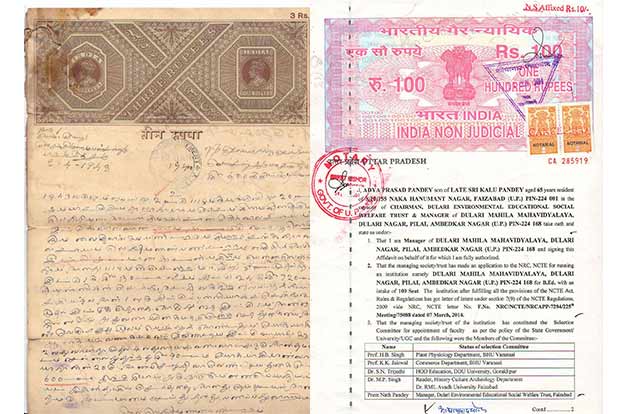E-stamp remains on paper
In 2016, Tamil Nadu government passed a Bill allowing e-payment of stamp fee to courts. However, the mechanism of making it a reality is yet to take off.;
By : migrator
Update:2017-04-15 07:35 IST

Chennai
The Tamil Nadu government had come up with a Bill last year, seeking to introduce e-stamps for payment of court fees, which will dispense with undue usage of huge volumes of judicial stamp paper. But till date, it is yet to become a reality though a lot of hype revolves around making Madras High Court paperless.
Though the Delhi High Court had introduced e-stamps in 2012 followed by the Chhattisgarh High Court and the Rajasthan High Court in 2016, the Madras High Court is yet to make any headway in this regard. The Tamil Nadu Government had brought about the Tamil Nadu Court Fees and suits Valuation (Amendment) Act, 2016, providing e-stamps also as an acceptable mode of payment of court fees. But till date, the modalities of implementing the new system are yet to be made public. Moreover, the system is secure and reliable and if online payment is introduced, litigants and lawyers need not visit the court to make payments. The major advantage is that the process would do away with the huge accumulation of stamp papers.
Cumbersome process
In fact, as far as the Madras High Court is concerned, the issue had gained prominence in 2013 when an application was moved in the High Court to direct the registry to issue challan for paying Rs. 48 lakh as court fee through Reserve Bank of India to the credit of Tamil Nadu government. The application was filed on the basis that the Sub Treasury Office, Chennai, authorised to supply the judicial stamp paper, pleaded its inability to furnish the same to the value of Rs.48 lakh.
The applicant had further submitted that the process of attaching hundreds of judicial stamp papers was cumbersome, as the maximum value of judicial stamp papers is only Rs 5,000 and moreover, it would also result in wastage of huge volumes of papers.
Justice R Sudhakar, who dealt with the case then observed, “A huge volume of judicial stamp papers is consumed while paying court fee. This creates unwanted stock of defaced judicial stamp papers, which occupy a large space in all courts. If the huge volume of judicial stamp papers is dispensed with, the space can be better utilised.”
Also, stressing on the aspect that it will be a welcome measure to dispense with the use of judicial stamp papers considering the huge volume of cases filed, the judge said, “This court is of the view that e-Court fee payment system should be adopted for Madras High Court, as well as in all civil courts, including Motor Accidents Tribunal in the District.”
Although a majority of the advocates are keen that e-stamps are introduced at the earliest, equal stress is being laid on the new system being evolved as completely hassle-free. They insist that the provision for paying online should be an integral part of the new system and the facility should be available round the clock. Advocates also insist that a printout of the challan should be proof enough for the payment made.
The old and the new
Advocate L G Sahadevan said, “e-stamp is bound to be a good move when it involves high denomination, as court fee in civil and property disputes. But for filing a writ, wherein Rs.1,000 is involved, it would be preferable to use a stamp paper. Ideally, both the system should coexist, leaving the choice to the litigants and advocates.”
However, the Law Commission of India has been repeatedly talking about reforming the Indian Stamp Act 1889 and the Court-Fees Act 1870. In a report submitted way back in 2009, while highlighting the artificial shortage of stamp papers and their sale in the black market, it said, “In view of more modern and convenient methods of charging duty on instruments and court-fees on documents to be filed in courts being available in our country, the mode of their payment requires to be drastically overhauled. These alternative modes of payment would not only save the government huge costs of printing them and commission to stamp-vendors, but also prevent fraud and avoidable hassles to the public.”
On the very face of it, e-stamps have more advantages when compared to stamp papers. Besides reducing the size of court bundles, the move would also put an end to sale of counterfeit stamps, stamp reuse and loss or damage of stamps. However, with the modalities yet to be worked out, advocates insist that e-stamps should be introduced only in addition to the existing system of affixing paper stamps.
Visit news.dtnext.in to explore our interactive epaper!
Download the DT Next app for more exciting features!
Click here for iOS
Click here for Android

